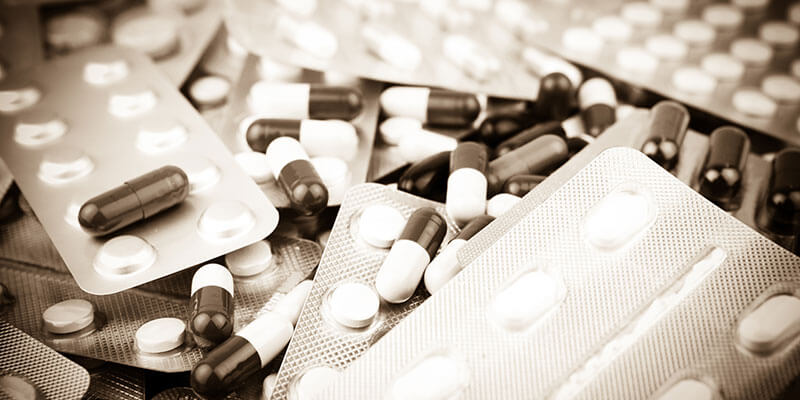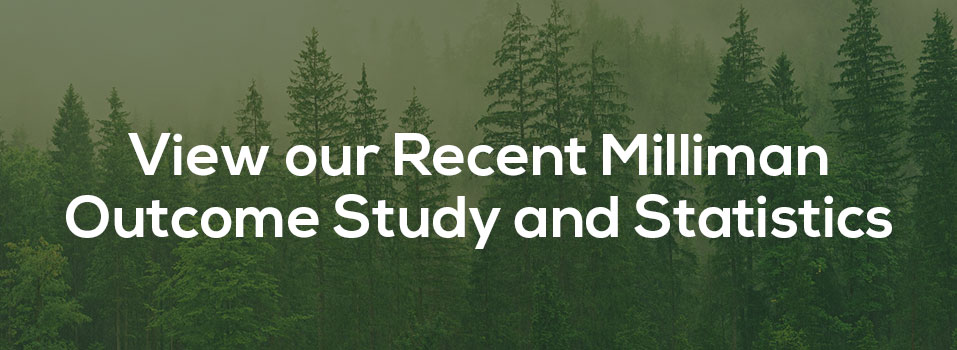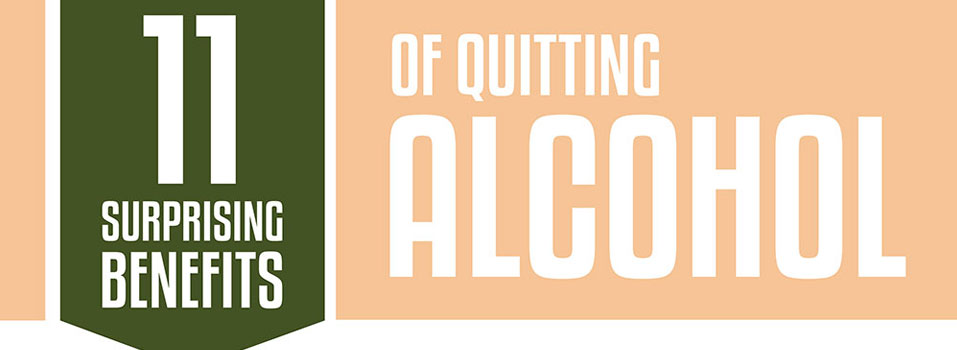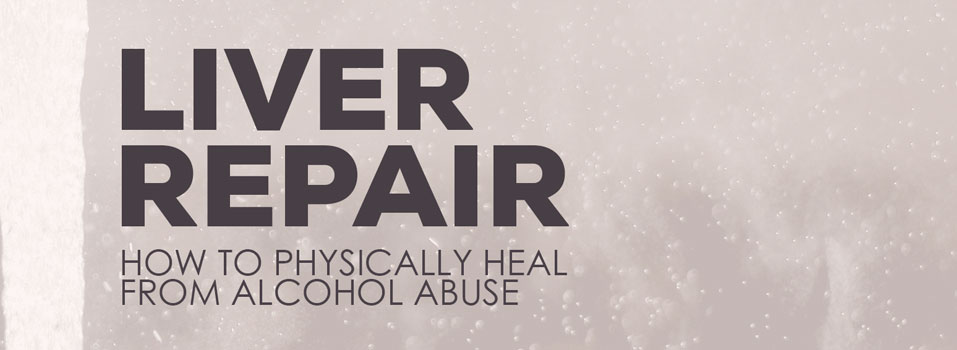Prescription Medication Addiction and Abuse: A Growing Epidemic
Prescription medication abuse is quickly becoming one of the biggest drug epidemics in the United States.
Over-prescribing doctors and inadequate regulations are making it easier and easier for anyone to get their hands on prescription medications and increase the likelihood of abuse.
What's more, prescription medications like opioids can be both highly addictive and dangerous, making them not only more likely to be abused, but also more likely to cause an overdose.
The following guide will walk you through the basics of prescription medication abuse. It includes what kinds of prescription medications are at risk of being abused, how they affect the brain and cause addiction, how to determine if you are addicted, and more.
The drug information included is provided by both the National Institute of Health's National Institute of Drug Abuse and Medline Plus from the U.S. National Library of Medicine.

What Types of Prescription Medications Are Typically Abused?
Prescription medications are used for treating a variety of different disorders and diseases in the body. They can be used for everything from hypertension and anxiety to bacterial infections and low bone density. In fact, prescription medication use is so common that a whopping 48.7% of U.S. citizens used at least one prescription in the past month according to the Center for Disease Control and Prevention.
When discussing prescription medication abuse and addiction, however, there are three types of medications that are misused more frequently than others: stimulants, central nervous system depressants, and opioids.
All of the most commonly abused prescription medications fall into one of these categories. And while each type of drug will have different effects on the body, they are all more likely to be abused than other types of prescription medications.
Stimulants, like the name suggests, are substances that boost energy levels and increase attention and alertness. They can also carry the unfavorable side effects of increasing blood pressure, heart rate, and respiration. Stimulants were once used to treat a variety of disorders such as asthma and obesity but, because of its high abuse potential, has since seen a decline in clinical applications. Most physicians now use it to treat attention deficit hyperactivity disorder (ADHD) and sometimes depression.
Central nervous system depressants are another type of prescription medication with a high potential for abuse. These substances work to decrease brain activity and provide a sedative effect. They typically will have the opposite impact on the body compared to stimulants and may decrease blood pressure and heart rate. These effects are especially useful at treating anxiety and sleep disorders.
Opioids are the last category of abused prescription medications and are the most commonly misused in the country. In fact, a 2015 survey conducted by the National Institute on Drug Abuse found that an alarming 8.5% of survey participants aged 18 to 25 are on opioids. These substances, in addition to treating pain, are particularly dangerous as they also create intense feelings of euphoria in users.
It's worth noting that opioid use is quickly becoming a national epidemic. The CDC reports that in addition to higher rates of opioid abuse, the continual rise of opioid-related overdose deaths has nearly tripled from 1999 to 2014. Deaths in 2014 alone numbered over twenty-eight thousand.
Prescription Medication Street Names
While there are a large number of street names for prescription medications, there are a few for each category that are more common than others. These are listed below.
Stimulants
- Black Beauties
- Uppers
- Pick-me-ups
- Amps
- Hearts
- Bennies
- Pickups
CNS depressants
- Blue Dolls
- Green Frogs
- Rainbows
- Red Bullets
- Blue Bullets
- Blue Birds
- Blue Angels
Opioids
- Oxy
- Hillbilly Heroin
- Killers
- Percs
- Vikes
- Cody
- Apache
How Does Prescription Medication Use Affect the Body?
The effects of prescription medications are felt due to chemical reactions taking place in the brain largely concerning the production and distribution of neurotransmitters. These chemicals can be thought of as the way the cells in our brains interact with each other. They are directly responsible for most of the processes in the body including the beating of our heart, the regulation of temperature, and even feelings of reward and happiness.
Each of the three categories prescription medications discussed above interact with the brain differently.
Stimulants, for example, cause a boost in energy and alertness by increasing dopamine levels in the brain. This chemical is largely responsible for feelings of pleasure but can also affect movement and attention. By flooding the brain with dopamine, an abused stimulant overloads dopamine receptors and thus causes a surge of energy.
Depressants create the opposite effect, calming the brain's functions and generally slowing down operations, by interacting and enhancing the effects of a neurotransmitter called GABA. It is this chemical's responsibility to regulate and inhibit activity of the central nervous system. Abusing prescription depressants then creates an extremely relaxing effect.
Opioids also interact directly with neurotransmitters. These medications attach to opioid receptors throughout the brain and body to inhibit pain and sometimes emotion. They also directly affect the reward center of the brain and, as such, can become highly addictive much quicker than many other types of substances.
What is the Difference Between Prescription Medication Abuse and Addiction?
It's quite common to see the terms "abuse" and "addiction" used interchangeably. But the truth is, while the two concepts are closely related, they don't actually describe the same thing. In fact, someone who abuses a certain substance isn't necessarily addicted to it and someone addicted to a substance isn't necessarily abusing it, especially when it comes to prescription medications.
Here's the difference.
When it comes to substance abuse, the National Institute on Drug Abuse (NIDA) defines it as "when people use illegal drugs or use legal drugs inappropriately." So, while using any illegal substance immediately constitutes drug abuse, simply using a prescription medication is not technically abuse. When such medication isn't used according to the instructions of your care provider, however, is when prescription medication use becomes abuse.
Addiction, on the other hand, refers to the actual physical effects repeated use of a substance can have on the brain. Noticeable changes in behavior, the inability to control cravings, and physical signs of withdrawal are all physical signs of actual addiction. It's worth pointing out that even using prescription medications according to your doctor's instructions may result in addiction as not all physicians follow proper prescribing protocol.
Recognizing a Prescription Medication Use Disorder
It's important to note that the most recent edition of the Diagnostic and Statistical Manual of Mental Disorders (DSM-5) has been updated to include both "substance abuse" and "substance dependence" under a single category, "substance use disorder."
If you think you or someone you care about may have a prescription medication use disorder, the DSM-5 includes a list of eleven symptoms that you can use as a guide (provided by NIDA). The DSM-5 classifies the occurrence of at least two of the following in a one year period as signs of a substance use disorder:
- You experience a regular desire to use prescription medications or you've unsuccessfully tried to cut back on using.
- You have failed to meet multiple life obligations due to your prescription medication use.
- A great deal of your time is spent on finding, using, and recovering from taking prescription medications.
- You have recurring and regular cravings for the prescription medications.
- You still continue to abuse prescription medications even though you are well aware of the fact that it's causing both psychological and physical problems.
- You are still continuing to abuse prescription medication even though this use is proving detrimental to your social relationships.
- You no longer participate in activities that were once very important to you because of your prescription medication abuse.
- You have started using prescription medication physically dangerous scenarios such as while you are driving.
- You've been taking the prescription medications for longer than you planned on or are using higher doses.
- You've noticed signs of tolerance. These could include needing larger doses of the prescription medications to feel the same effect or noticing a diminishing effect after continued use.
- You've experienced withdrawal symptoms from not using prescription medications or you're using higher doses to keep from feeling such symptoms.
More information on the signs of prescription drug abuse can be found here.
Prescription Medication Use Disorder Side Effects
Just like any other abused substance, misuse of prescription medication can lead to a host of unfavorable side effects that vary between the types of medication. Below is a list of the harmful effects each category of prescription medication can have on the body.
Stimulants
- Irregular heart rate, heartbeat, and blood pressure
- Loss of appetite
- Memory loss and the inability to think clearly
- Emotional and mood instability
- Increased body temperature and flushing
- Restlessness and tremors
Depressants
- Lowered blood pressure
- Loss of coordination
- Memory problems
- Impaired judgement
- Decreased attention
- Slurred speech
Opioids
- Dry mouth
- Lowered blood pressure
- Fatigue
- Confusion
- Dizziness
- Constipation
How to Approach Someone About Their Prescription Medication Abuse
Addiction is more than just a physical problem - it's a mental one too. An individual that's addicted to prescription medications is thinking and reasoning with a brain that's been physically altered to seek out more drug use. Addiction, then, is a disorder, not a choice.
That's why approaching someone you care for about their prescription medication use disorder can be especially difficult. One of the ways you can help them get the treatment they need is by giving them the DSM-5 test found above. It will help them realize that they have a problem and make them more likely to seek treatment willingly. If they still do not think they have a problem, try getting them to see a licensed physician for a professional opinion.
Utilize the resources offered below as well to get more information on how to get your friend or family member the help they need.
What Makes Prescription Medication Abuse So Addictive?
One of the main contributors to prescription medication being so addictive is the fact that they typically produce a multitude of effects in the brain. Stimulants, for example, boost energy levels and alertness but also bring with it a boost in mood and a sense of euphoria. Depressants and opioids especially also carry with them this feeling of overall well-being.
Addiction is a complex condition. While some people may think that addiction is simply a physical need for the substance, the truth is that addiction goes beyond just physically wanting the drug - it actually affects the mind and the personality as well.
This is due to the fact that prescription drugs have a direct effect on the brain's reward center, the nucleus accumbens.
This area regulates the release of dopamine which has also been shown to have a significant impact on how we create and store memories. The more pleasurable an experience is, the more dopamine is produced and, thus, the more likely the memory is to be stored.
The result of this intricate connection of brain structure and neurotransmitters is the fact that drug use (increased dopamine) can not only create feelings of pleasure - it can even alter your memory.
Withdrawal Symptoms for Prescription Medication Addiction
Withdrawal is defined as the physical and mental effects that result from the sudden removal of a certain substance from an individual's routine. These symptoms are different for most substances but what they all have in common is that the body is trying to acclimate to the absence of the drug.
In the case of a stimulant, for example, an addicted individual's brain has reduced its dopamine production to compensate for the high levels of the chemical caused by the stimulant. As such, if that individual then tries to remove the stimulant from their life, their brain is functioning with significantly decreased levels of dopamine. This chemical deficiency is for the most part what causes the symptoms of withdrawal.
Some common withdrawal symptoms for stimulant addicts may be impaired memory, body aches, intense cravings, fatigue, paranoia, irritability, anxiety, depression, and insomnia.
Individuals addicted to depressants may experience a variety of withdrawal symptoms including agitation, insomnia, nausea and muscle aches. Withdrawal can be life threating and, as such, should only be performed under the observation and guidance of a qualified medical professional.
Opioids also carry with them a large number of side effects which include anxiety, muscle aches, sweating, diarrhea, cramping, vomiting, and insomnia. While the symptoms are extremely uncomfortable, they are not life-threatening.
Supplemental Resources for Friends and Family Members
The resources listed below provide additional information to help you and your loved ones cope with a prescription medication use disorder.
How to Confront and Addict in Your Life - Advice on how to talk to a loved one about their substance use disorder. National Institute on Drug Abuse (NIDA) - A collection of information on prescription drug abuse provided by the National Institute of Health. Substance Abuse and Mental Health Services Administration (SAMHSA) - An agency within the U.S Department of Health and Human Services, SAMHSA provides a wealth of resources concerning substance abuse and mental illness. MedlinePlus - An informational resource from the U.S. National Library of Medicine with lots of good information on prescription medication abuse. Closing Thoughts
Prescription medication abuse is becoming one of the country's fastest growing health epidemics due to the high potential for abuse and lethality. And while getting treatment for you or your loved one's prescription medication use disorder can be difficult, it could be one of the best decisions you'll ever make.






